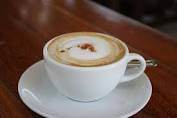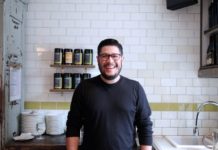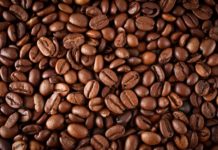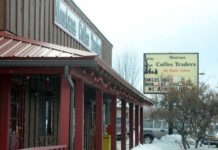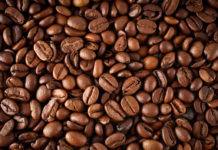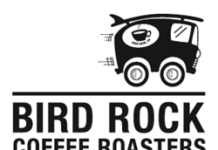Cold brew is suddenly everywhere. Sure, you’ve been able to find it at coffee shops like Starbucks and Peet’s Coffee for a while, but now it’s in mainstream stores as a ready-to-drink beverage, at least here in the US.
My colleague Brian Bennett showed exactly how simple (and affordable) it is to make a week’s worth of cold brew while you sleep. It’s easy to make, but don’t assume it’s like making drip coffee. Cold brew has the tendency to mute the more subtle flavor notes you might find in a hot brewed coffee, which raises the question: What sort of coffee should you use for cold brew?
How temperature affects the brewing process

From bean to cup, coffee is extremely complex, possibly even more complex than wine. You have a long list of variables to thank for that — like the origin or elevation at which it was grown, the variety of bean, how it was picked, processed and roasted and many other factors. Even how you store and brew the coffee can dramatically change how a particular roast will taste once it reaches your tongue.
Cold brew, unlike other coffee brewing methods, is extremely forgiving of a lot of these variables.
As the name suggests, cold brew is often made at much lower temperatures than a drip or pressed coffee, which are typically brewed between 195 and 205 degrees Fahrenheit (91 to 96 degrees Celsius). Cold brew is usually made at room temperature or below, 70 to 35 degrees Fahrenheit (21 to 2 degrees Celsius). Due to these much lower temperatures, the brew time must be lengthened and coarseness of the grind adjusted proportionately to reach proper extraction. But it also affects the flavor quite a bit.
Much of the acids and solubles that carry the lighter floral and fruity notes in a coffee, as well as the undesired flavors, are only extracted at certain temperatures. This is why cold brew is touted as less acidic and easier on your stomach. But it’s also why cold brew is often muted in flavor when compared to the same bean brewed as a pour over or a French press.
If you take a look at the Specialty Coffee Association of America’s Coffee Taster’s Flavor Wheel, most of the flavors on the right side of the wheel are far harder to achieve with cold brew coffee.
Some claim that by adding a hot bloom process — a preliminary step wherein you pour hot water over the grounds to release carbon dioxide and better prepare the coffee for extraction — primes the cold brew, allowing you to extract some of the more subtle flavors listed on the packaging before introducing the room temperature water.
No matter which way you cut it, this hot bloom will not release the same level of acidity or brighter flavor notes that come with hot brew methods. And if this is what you’re after, you may want to consider one of the many ways of flash chilling a hot coffee.
Light, medium or dark roast?
If you scour the internet for which roast works best in cold brew, you’ll find a divide between coffee enthusiasts. Some swear that a 12-ounce (340 gram) $18 bag of light roasted, natural Ethiopia Yirgacheffe makes the best cold brew possible. The next guy will argue that the $8, 1-pound (454 gram) bag of dark roast from the supermarket makes an even better cold brew.
In the end, it comes down to preference. There is no right or wrong. However, it seems the majority tends to be in favor of darker roasts for cold brew. And there’s a reason for that.
Cold brew has a tendency to taste of darker, richer flavors, such as nutty, chocolaty, syrupy or earthy. And even if you are able to extract the brighter notes, the robust flavors tend to overpower the brighter ones.
In the last year alone, I’ve cold brewed over 50 times to varying degrees of success. I’ve experimented with dozens of coffees from different origins, varying roast levels, different brew times and different temperatures. Hot bloom or not, I’ve never truly been able to pull out or highlight the more defining flavors in a coffee.
And those light roasted, single origin floral and fruity coffees? Those tend to carry a heftier price tag than your typical supermarket coffee. If cold brew is so forgiving and you can’t bring out those notes anyway, why waste the money on the expensive stuff?
That’s the way the logic goes, at least. And I tend to agree. So here’s a set of guidelines that will help you narrow down the best coffee for cold brew for you.
- Take what you know about your coffee preferences for hot brewed coffee and throw it out the window. This is a different ballgame.
- Start on one end of the spectrum and work towards the opposite end until you find what suits your tastes best. (If you like light roasts for your pour overs and press coffee, try starting with a robust, dark roast and go lighter until you reach something you enjoy.)
- Cold brew is more forgiving when it comes to beans that have been sitting around for a few weeks, since not all of the solubles will be extracted from the coffee. So extreme freshness isn’t as important as it is for other brew methods.
- Keeping that in mind, don’t splurge on the expensive stuff…yet. Buy cheaper, older coffees until you find what works best, then experiment with more expensive coffees if you so desire.
- Single origins tend to cost more than blends, but they will give you a better understanding of what you like and what you don’t. This remains true with cold brew, but to a slightly lesser degree.

